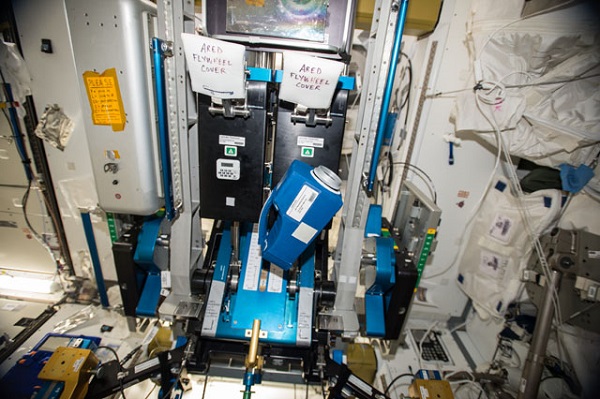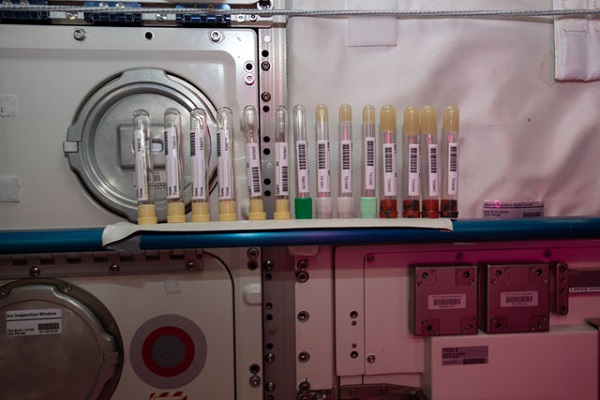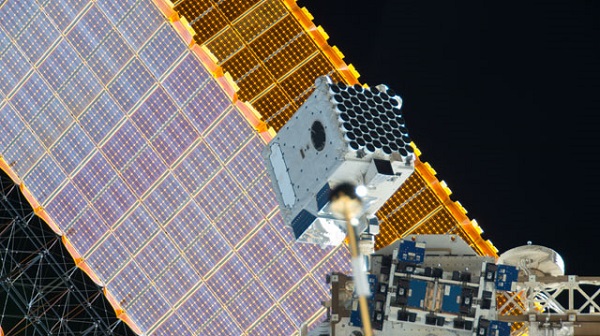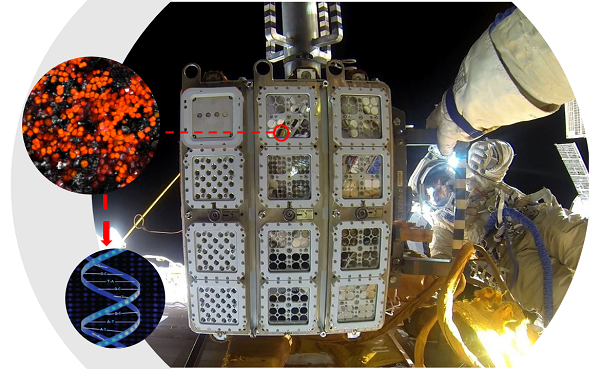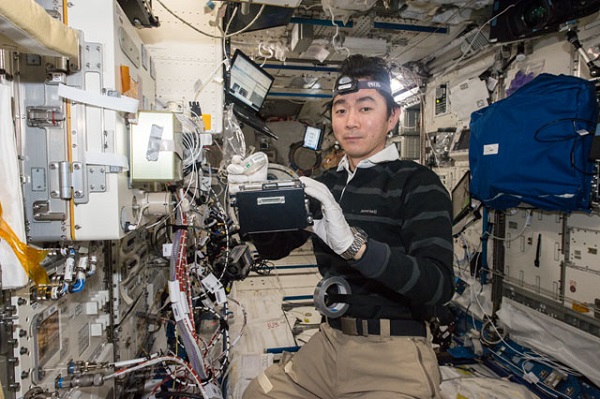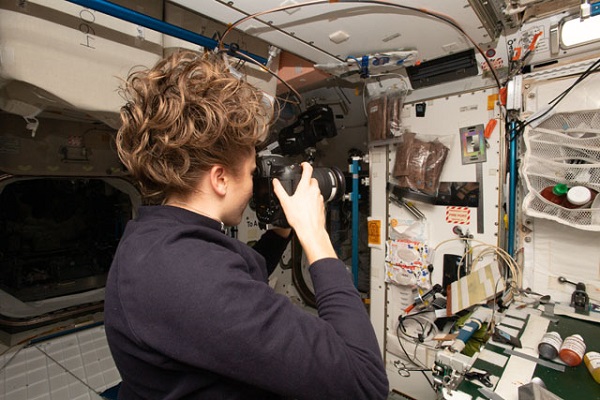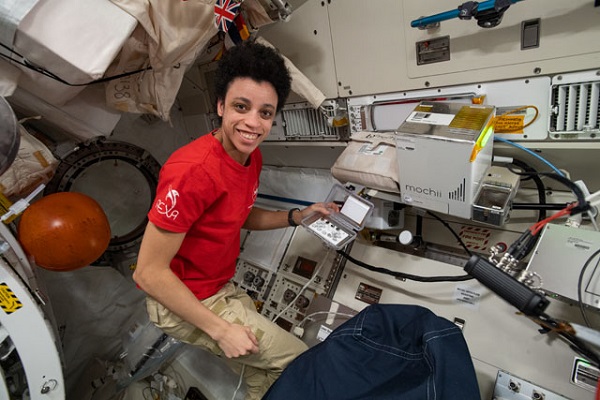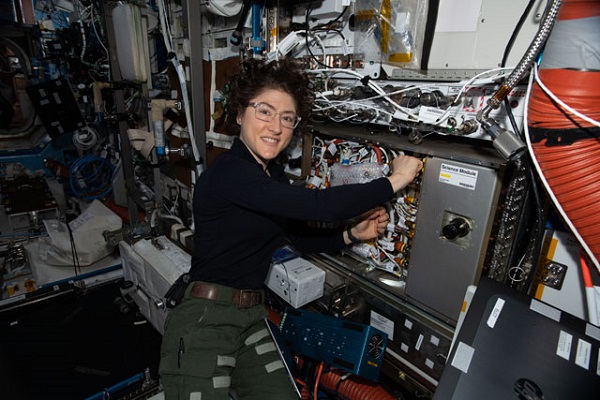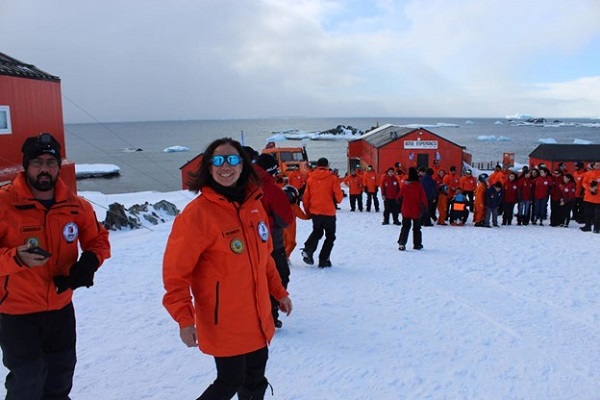Lee esta historia en español aquí.
The International Space Station, in its third decade of continuous human presence, has far-reaching impact as a microgravity lab hosting technology demonstrations and scientific investigations from a range of fields. Between Oct. 1, 2021 and Sept. 30, 2022, researchers published more than 400 scientific papers based on studies conducted aboard the space station.
Read highlights of some of the groundbreaking space station science published this past year below. For more space station research achievements and additional information about the findings mentioned here, check out the 2022 Annual Highlights of Results.
Tracking unique strains of microbes
Microbial Observatory-1 monitored the microbes present on the space station, identifying hundreds of microbial species. Researchers report finding three novel strains of Agrobacterium, a genus known for disease-causing characteristics. Results suggest that these strains could colonize habitats with fewer nutrients, giving them an advantage over those that need richer environments. The study of microbes offers insight to support development of mitigation strategies for maintaining safe living spaces for astronauts in spaceflight and for humans on Earth.
Protecting crew members’ brains
ISS Medical Monitoring regularly collects crew member health data that measures spaceflight’s effects on the human body. This information also is used for additional research studies. Researchers from ESA (European Space Agency) and State Space Corporation ROSCOSMOS used crew member blood samples taken before and after extended exposure to microgravity to assess brain tissue biomarkers. They report an increase in blood-based biomarkers of inflammation that could indicate potential risk to long-duration spaceflight crews. Additional studies with larger samples are needed to clarify these findings.
Measuring magnetars
NICER studies the extraordinary physics of neutron stars, which are glowing cinders left behind by supernovas, or the explosions of massive stars. Researchers report the classification of a recently discovered astronomical object, Swift J1555.2-5402, as a magnetar. Magnetars are highly magnetized neutron stars that release an enormous amount of magnetic energy through irregular outbursts of X- and gamma-rays. Observations of these outbursts help scientists address a wide range of astronomical topics, increasing understanding of some of the most extreme conditions in the universe.
Cyanobacteria rock extreme environments
EXPOSE R-2 BIOMEX, an investigation from ESA, measures the survival of terrestrial organisms in extreme environments, which could provide insight into the characteristics that extraterrestrial life would need to survive in space. Researchers exposed the desert cyanobacterium Chroococcidiopsis to simulated Mars-like conditions in space and on the ground. They report no increased genetic variants in the space strain, suggesting that the strain retained its ability to repair accumulated DNA lesions caused by radiation exposure. Cyanobacteria have potential for use in artificial bioregenerative life support systems to provide oxygen and food in space and for fuel, fertilizers, marine farming, and pharmaceuticals on Earth.
How plants sense gravity
Gravity acts as an important influence on plant development on Earth. Plant Gravity Sensing, an investigation from the Japan Aerospace Exploration Agency (JAXA), studies whether plants grown in microgravity can sense changes in gravity. Researchers report that Arabidopsis seeds cultured on a nylon lace mesh in microgravity had coiled roots and increased root entanglement with the mesh compared to those in Earth’s gravity. This observation suggests that gravity influences root coiling. Understanding how gravity affects plant growth could help scientists develop new ways to grow plants in space and lead to development of new plant varieties on Earth.
Archaeology in orbit
More than 332,000 items have been sent to the space station during its 20-plus years of human habitation. SQuARE, an investigation sponsored by the ISS National Lab, examined what happened to these objects and their possible symbolic and social meanings for crew members. Researchers report their observations on the processes developed to return research, commercial, and personal items to Earth and the meanings and associations of the objects that return. This research provides insights into the nature of life on the station and could inform design of future space habitats by expanding our understanding of how different objects and spaces are used over time. The paper’s authors received an Award for Outstanding Work in Digital Archaeology from the Archaeological Institute of America.
Microanalysis of Martian meteorite
Mochii is a miniature scanning electron microscope (SEM) that conducts real-time imaging and measurements of specimens on the space station. Such particles can interfere with equipment or affect crew health. To test the accuracy of the technology, researchers analyzed a fragment of a Martian meteorite found in Antarctica in 1984. They compared results using a standard SEM on the ground and Mochii on the space station, noting good agreement between the results that indicates accurate functioning of the microscope in space. Mochii could support novel, real-time scientific investigations and technology testing in microgravity to benefit space travelers and humans on Earth.
Watching water use from above
ECOSTRESS measures the temperature of the surface of Earth to help answer questions about water availability, vegetation water stress, and agricultural water use. Researchers used data from the investigation to study the water use efficiency (WUE) values within and among regions with different plant functional types, such as grassland and forest. WUE provides a direct measure of the link between plant carbon uptake and water loss and shows how ecosystem function varies with climate.
Ultracold bubbles
The space station’s Cold Atom Lab (CAL) produces clouds of chilled atoms that allow scientists to study fundamental behaviors and quantum characteristics that are difficult to probe at higher temperatures on Earth. Researchers report creation and measurements of bubbles of these ultracold atoms. Their observations could inform future microgravity studies exploring the fundamental nature of the condensed bubble state and advancing understanding of quantum systems.
Radio program notches 7th continent
The ISS Ham Radio program reached every continent on Earth when astronaut Kjell Lindgren spoke via amateur radio with students at a school in Argentina’s Esperanza Base in Antarctica. These sessions engage students, teachers, parents, and other members of the community and help inspire interest in science, technology, engineering, and math. Esperanza Base is a permanent, year-round Argentine research station in Hope Bay on the Trinity Peninsula, one of only two civilian settlements in Antarctica.























